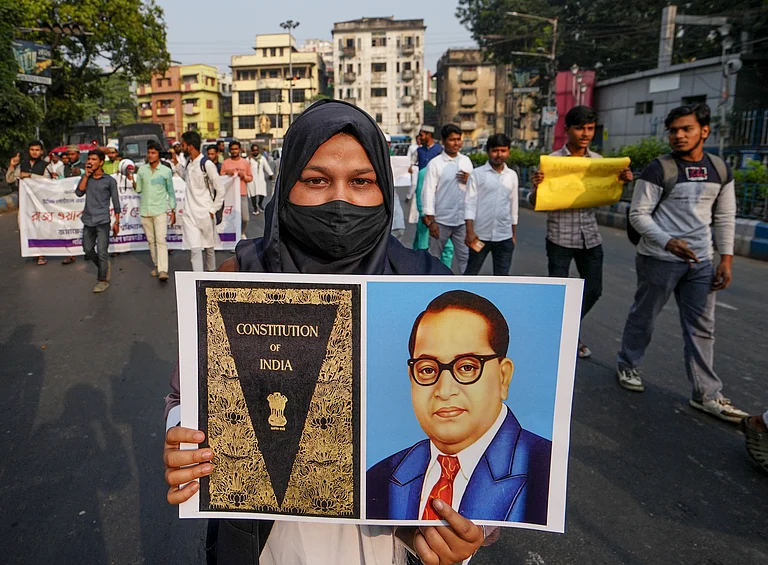“English is the milk of a lioness, only those who drink it will roar.”
—B R Ambedkar
Rule of Peshwa is gone/Mother English has come. /In such a dismal time of ours/Come Mother English, this is your hour. /It is all for the good of the poor/Manu’s dead at English Mother’s door. /Knowledge is poor man’s refuge and shade/It’s akin to comfort mother-made.
—Mother English by Savitribai Phule
In April 2010, a goddess was installed in a small single-storey temple in Banka in Lakhimpur Kheri in Uttar Pradesh. It was an ambitious undertaking to fill the vacancy of a goddess in a Dalit household. She embodies the Ambedkarite vision. She was created to emancipate and to educate. She would be called Angrezi Devi. The goddess didn’t come from any scriptures but was manufactured as a political assertion and a means to emancipate the lower castes. The two-and-a-half feet bronze figure, clad in robes, a wide-brimmed hat and holding a pen looked like the Statue of Liberty and in many ways, she had been conceived as one.
Writer and activist Chandra Bhan Prasad, who created her, had said there were some modifications made to give the goddess her own mythology as all other deities in other faiths have. This would be a political one to fit the context of the status of the Dalits in society. The maker gave the goddess a keyboard and a pen as a symbolic representation of weapons. He made her stand on a computer with a screen that displayed the chakra of the Buddhist faith. Angrezi Devi held the Constitution of India. The temple was to be made in black on a piece of land donated by Nalanda Public Shiksha Niketan. “Our goddess is modern, [she even] has an email address,” Bhan had said then.
The temple never got constructed and the statues, two of them that were built, remained in the maker’s house in Delhi. Bhan, an atheist, had framed a narrative too. He said Dr Babasaheb Ambedkar found her in America when he went to Columbia University to study and brought her here with him.
Bhan, a Pasi (a caste of pig rearers) is from Azamgarh and in 2019, at an installation at the Serendipity Arts Festival in Goa, curated by Sudarshan Shetty, Bhan recreated the temple. The entrance said ‘Paradise Lost’ after John Milton’s poem about man’s disobedience and ouster from the Garden of Eden. This temple would have been a refuge for the outcastes.


























